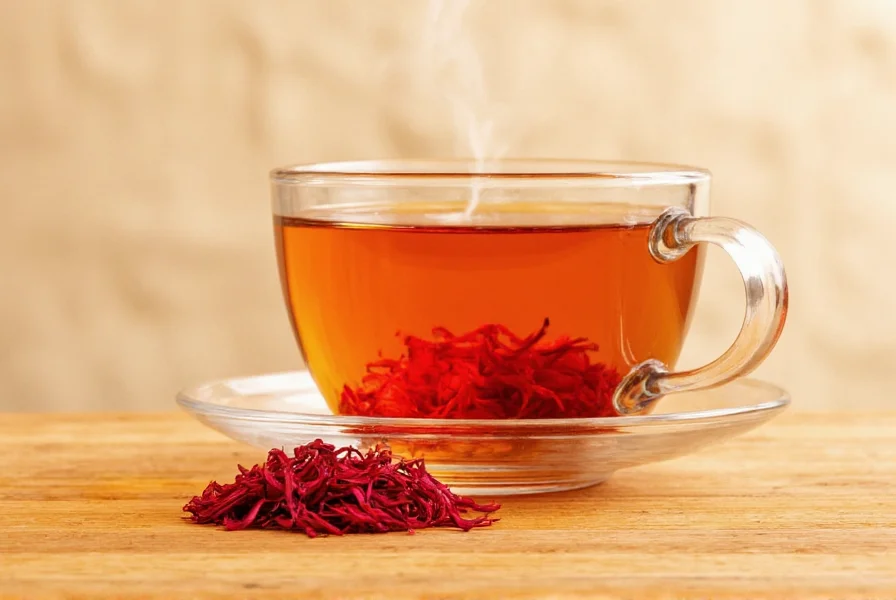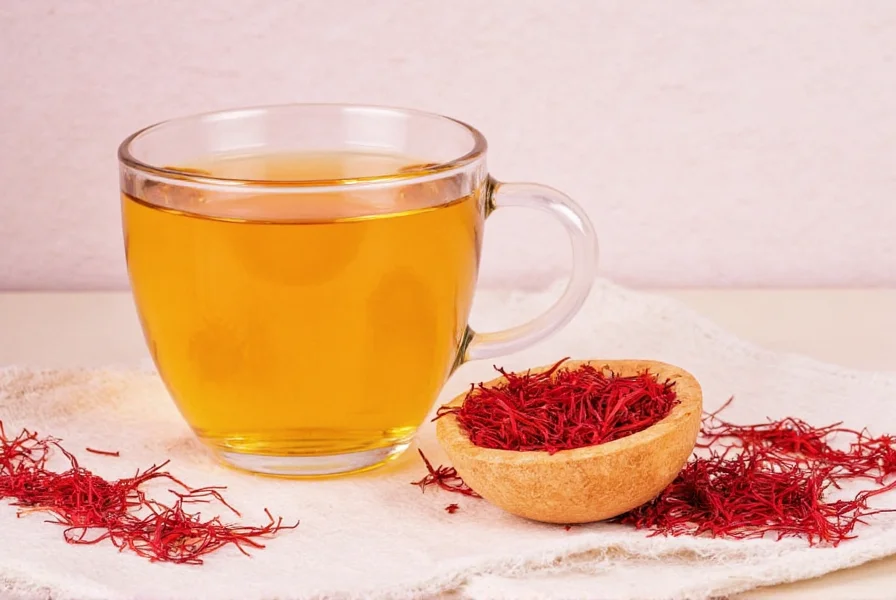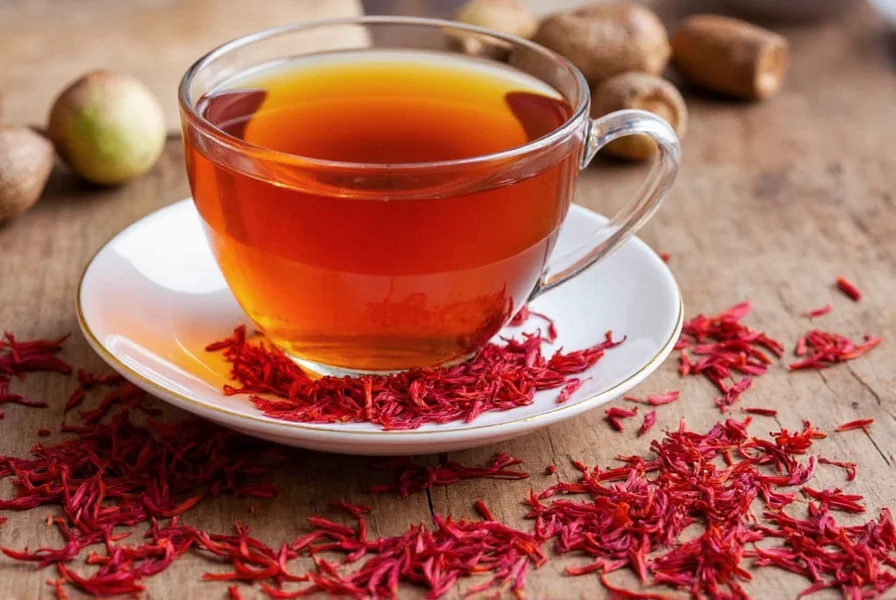Saffron tea, made from the delicate stigmas of Crocus sativus flowers, has been valued for centuries in traditional medicine systems across the Middle East and Asia. This golden-hued infusion delivers more than just visual appeal—modern research reveals specific bioactive compounds like crocin and safranal that contribute to its potential health effects. Unlike many herbal teas, saffron contains measurable concentrations of compounds that interact with neurotransmitter systems, explaining its traditional use for mood support.

What Makes Saffron Tea Unique
Saffron tea differs from other herbal infusions through its specific chemical composition. The key active components include:
| Compound | Natural Concentration | Primary Effects |
|---|---|---|
| Crocin | 4-15% | Antioxidant, neuroprotective |
| Safranal | 0.5-1.5% | Mood regulation, antioxidant |
| Picrocrocin | 2-8% | Antioxidant, flavor compound |
These compounds work synergistically, creating effects that isolated supplements often fail to replicate. The water-based extraction method used in tea preparation particularly enhances the bioavailability of water-soluble compounds like crocin.
Evidence-Based Health Benefits of Drinking Saffron Tea
Scientific research on saffron tea specifically remains limited, but studies on saffron supplementation provide valuable insights applicable to tea consumption:
Mood Enhancement and Depression Relief
A 2022 meta-analysis published in Phytomedicine reviewed 12 clinical trials involving 906 participants. Researchers found saffron supplementation (typically 30mg daily) demonstrated comparable effectiveness to selective serotonin reuptake inhibitors (SSRIs) for mild to moderate depression, with fewer side effects. The study noted that safranal and crocin appear to modulate serotonin, dopamine, and norepinephrine systems.
For drinking saffron tea specifically, a 2020 study in Nutritional Neuroscience showed that participants consuming saffron tea twice daily for eight weeks reported significant improvements in mood scores compared to placebo. The researchers attributed this to the combined effects of safranal's rapid absorption and crocin's longer-term neuroprotective benefits.
Antioxidant and Anti-Inflammatory Properties
Saffron contains potent antioxidants that combat oxidative stress. Research in the Journal of Agricultural and Food Chemistry demonstrated saffron's oxygen radical absorbance capacity (ORAC) value of 190,000 μmole TE/100g—significantly higher than most fruits and vegetables. These antioxidants help protect cells from damage that contributes to chronic diseases.
PMS Symptom Management
A randomized controlled trial in Complementary Therapies in Medicine found that women consuming saffron tea twice daily during their menstrual cycle experienced significantly reduced PMS symptoms, particularly mood swings and irritability. The study suggested saffron's effect on serotonin levels contributes to this benefit.
Proper Preparation Methods for Maximum Benefits
To maximize the health benefits when drinking saffron tea, preparation technique matters significantly. Here's the evidence-based method:
- Use 15-30mg of high-quality saffron threads (approximately 20-40 threads)
- Add threads to 8 ounces of water heated to 175-185°F (80-85°C)
- Steep for 5-15 minutes depending on desired strength
- Strain and enjoy—adding honey or lemon is acceptable but may slightly reduce antioxidant availability
Research shows that water temperature significantly affects compound extraction. Temperatures above 195°F (90°C) degrade safranal, while temperatures below 165°F (75°C) yield suboptimal crocin extraction. The 5-15 minute steeping window balances maximum benefit extraction with avoiding excessive bitterness from picrocrocin conversion.

Safety Considerations and Potential Side Effects
While drinking saffron tea in culinary amounts is generally safe, important considerations exist:
- Dosage limits: Consuming more than 1.5 grams daily may cause adverse effects. Therapeutic doses in studies typically range from 30-100mg daily
- Pregnancy concerns: High doses may stimulate uterine contractions. Pregnant women should limit consumption to culinary amounts (under 10mg daily)
- Medication interactions: Saffron may interact with antidepressants (SSRIs, MAOIs), blood thinners, and blood pressure medications
- Allergic reactions: Rare but possible, particularly in those allergic to olives or Lolium species
A 2021 safety review in Food and Chemical Toxicology concluded that saffron consumption up to 100mg daily appears safe for most adults, but recommended medical consultation for those with bipolar disorder, as saffron might trigger manic episodes in susceptible individuals.
Understanding the Research Limitations
While the potential health benefits of drinking saffron tea appear promising, several research limitations exist:
- Most studies use standardized saffron extracts rather than tea preparations
- Long-term safety data beyond 12 weeks remains limited
- Optimal dosing for specific conditions requires further research
- Individual responses vary based on genetics and health status
Researchers emphasize that saffron tea should complement, not replace, conventional treatments for medical conditions. The current evidence supports its use as part of a holistic approach to wellness rather than as a standalone treatment.
Practical Recommendations for Daily Consumption
Based on current evidence, here's how to incorporate saffron tea into your routine:
- For mood support: Drink one cup in the morning and one in the early afternoon
- For antioxidant benefits: Consume one cup daily with a source of healthy fats to enhance absorption
- For PMS management: Begin drinking twice daily three days before expected menstruation
- Best timing: Avoid drinking within two hours of bedtime as saffron may have mild stimulating effects in some individuals
Conclusion
Drinking saffron tea represents a time-honored tradition now supported by emerging scientific evidence. When prepared properly using quality saffron threads, it offers potential benefits for mood, antioxidant status, and menstrual health. As with any bioactive compound, moderation is key—sticking to evidence-based dosages of 15-30mg per serving maximizes benefits while minimizing risks. While not a miracle cure, saffron tea can be a valuable component of a holistic wellness routine when approached with realistic expectations and attention to proper preparation methods.











 浙公网安备
33010002000092号
浙公网安备
33010002000092号 浙B2-20120091-4
浙B2-20120091-4